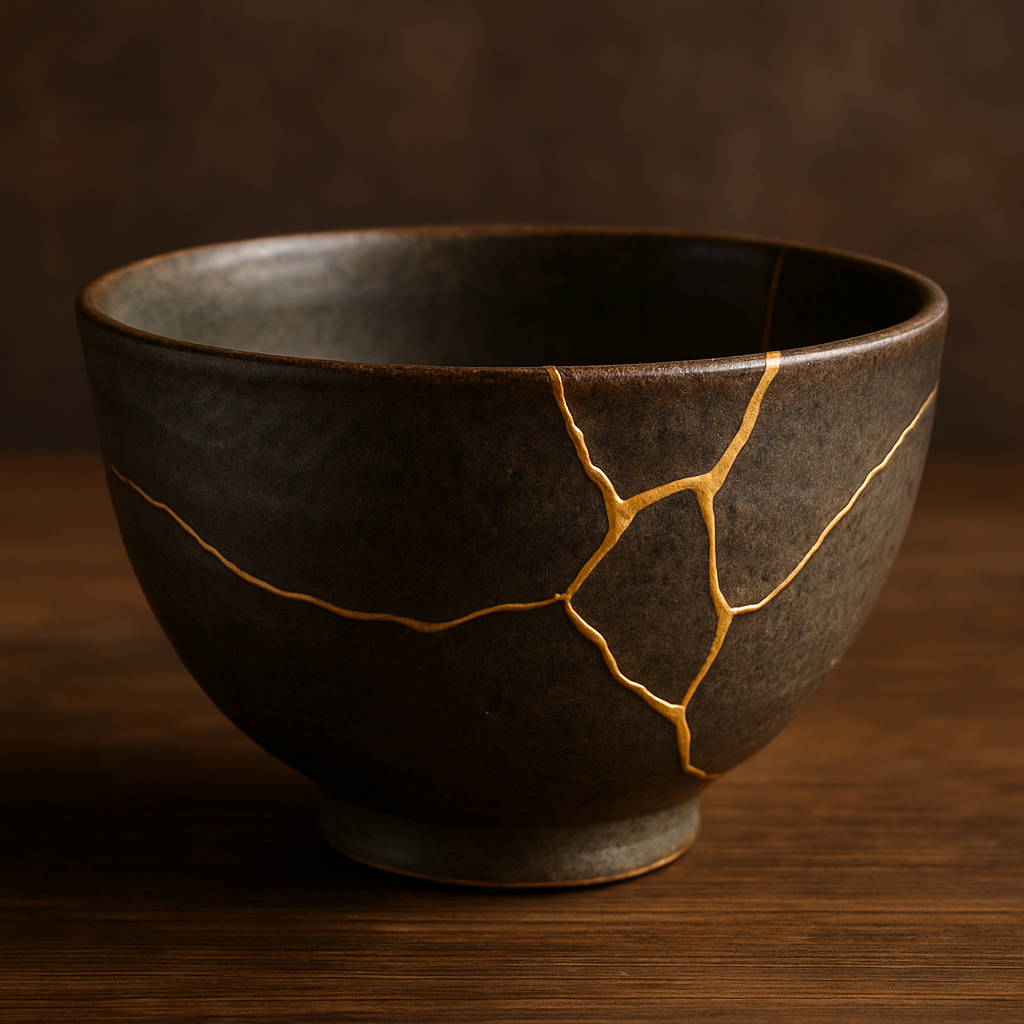
The Art and Philosophy of Kintsugi: Embracing Imperfection
Share
Did you ever break something beautiful and feel the bitter taste of remorse, dashing to dispose of it since it was no longer perfect? Kintsugi (金継ぎ)—the ancient Japanese art—defies doing so. Rather than hiding imperfections, Kintsugi blesses broken pottery with stunning, treasured pieces, highlighting imperfections instead of hiding them.
Throughout this article, we'll explore Kintsugi's fascinating history, philosophical roots, traditional materials, and its life-changing significance today.

1. History of Kintsugi
Kintsugi originated in Japan in the late 15th century during the Muromachi period (1336–1573). Shogun Ashikaga Yoshimasa once had his favorite Chinese tea bowl repaired in China. It returned, bound with unsightly metal staples. Disappointed, he tasked Japanese artisans with creating a more elegant solution.
Thus was born Kintsugi—"golden joinery"—a technique that uses urushi lacquer dusted with powdered gold, silver, or platinum to mend ceramics in a way that beautifies their cracks.
Soon, Kintsugi became a respected part of the Japanese tea ceremony (chanoyu), championed by tea masters like Sen no Rikyū. These repaired bowls were not simply usable—they were more valued for their stories and scars.

By Photograph taken by Stephane D'Alu (en:User:Sdalu) in April 2004 - Own work, CC BY-SA 3.0, https://commons.wikimedia.org/w/index.php?curid=26881
2. Philosophy Behind Kintsugi
Wabi-Sabi: Beauty in Imperfection
The Japanese concept of Wabi-Sabi teaches appreciation for the imperfect, impermanent, and incomplete. Natural wear, asymmetry, and simplicity hold greater beauty than sterile perfection.
Gold-filled cracks don’t hide damage; they elevate it—making the object even more precious through its scars.
Zen Buddhism and Mindfulness
Kintsugi embodies Zen ideas of impermanence and acceptance. Repair becomes meditation: applying lacquer patiently, embracing every step, and accepting the outcome as uniquely beautiful.

Ruthann Hurwitz, CC BY-SA 4.0 <https://creativecommons.org/licenses/by-sa/4.0>, via Wikimedia Commons
3. Historic Materials and Processes
Urushi Lacquer
A tree sap known for its strength and difficulty—curing it takes time, humidity, and care.
Gold and Precious Powders
Using the makie technique, artisans dust lacquer with gold or silver powder to accentuate the break lines.
Three Traditional Kintsugi Styles
- Hibi Naoshi (Crack Repair) – Simple cracks filled with lacquer and dusted.
- Kake Naoshi (Piece-Missing Repair) – Missing parts rebuilt entirely with lacquer.
- Yobitsugi (Joint-Call Repair) – Pieces from different ceramics joined for new meaning.

4. Modern Significance: Why Kintsugi Resonates With Us Today
Kintsugi is no longer just an art form—it’s a metaphor for modern life.
- Emotional Healing: Therapists use Kintsugi as a metaphor for resilience and trauma recovery.
- Sustainability: Encourages reuse and appreciation over disposal.
- Artistic Exploration: Modern artists fuse tradition with innovation.
💬 Kintsugi Village in Detroit is one of many projects using the art as a tool for emotional connection and community healing.

Kintsugi Village in Detroit, 2025
5. How to Practice Kintsugi with Respect and Thoughtfulness
- Honor the Origins: Recognize its roots in Japanese culture.
- Slow Down: Embrace mindfulness, not speed.
- Celebrate Scars: Let your piece (and yourself) remain imperfect.
6. Final Thoughts: Loving Your Own Cracks
Kintsugi offers a gentle truth: our flaws do not lessen our value—they make us more whole.
Whether you're using real lacquer or a symbolic Mudbox kit, you are honoring a deep tradition. You are choosing to repair, not replace.
🧡 Remember:
Kintsugi is not a method—it's a mindset.
